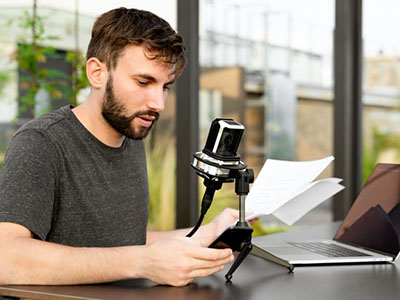Moodle feedback activity
You can use the Moodle feedback activity, which also manages anonymous responses and display to student choices. This involves:
- Create and configure a Feedback activity in Moodle
- Add questions to the Feedback activity
- Save activity template
- View collated feedback from students
Microsoft Forms in Moodle
- Go to Microsoft Forms and create a new Form
- Add the questions you wish the students to respond to. These can include:
- Multiple choice questions e.g. if you want a student to select from a specific list of areas for the revision session to focus on
- Text entry, e.g. for open ended questions such as comments and suggestions
- Ranking, e.g. for ranking the areas they feel most confident about to the least
- Rating, e.g. to allow the student to rate aspects of the session out of 5
- Share the form with the students by posting the link (URL) to the Moodle space - see Adding individual items section of the Moodle online course.
- Review responses from within Microsoft Forms, or export to Excel
Notes
- These instruction are for collecting informal feedback.
- LUMES evaluations continue to run at the end of modules.
Relevant training
Who was involved?
Dr Michelle To, with the support of ISS
What did you do?
I used Xerte to present my asynchronous lectures in PSYC214 Statistics (in Psychology), and received an overwhelming amount of positive feedback from students. Many who had previously disliked Stats even told me they enjoyed the lectures.
How did you do it?
I first took the Xerte online course offered by ISS, then I also completed an Open University course entitled Take your teaching online. From both modules, I designed and created lectures that were deemed highly engaging.
What were the key takeaways?
I used Xerte for asynchronous lectures but they can also be useful for labs, workshops, as additional resources for students. Outside of teaching, you can use Xerte to disseminate research findings to the general public, and as a recruitment tool to present university courses and facilities to potential students.
The presentation of teaching material is extremely important and Xerte is a great platform for this. It may take a bit of practice to get things started, but once you know how to use it, you can incorporate it into so many different aspects of your work. ISS has been great at helping out too, so you feel supported when you need assistance.
Any other info?
I have just really enjoyed preparing and producing my lectures in Xerte, and the students really loved it!
Here are two of the many pieces of positive feedback PSYC214 received in the evaluations:
"Michelle’s teaching method is amazing!!!! she explained everything really well which really helped me understand everything, i also loved the Panopto system with mini quizzes whilst watching the lectures so that you know if you’ve understood it before you move on, i found that those helped me a lot."
"The program that Michelle used on Moodle to complete the lessons. I like the interactive aspect of the lessons and lectures being broken down into smaller videos. Knowing what answers we got right and wrong on the WBAs was very helpful and the many resources that Michelle put out for us."
Who was involved?
Dr Michelle To, with the support of ISS
What did you do?
I awarded badges to PSYC214 students who completed weekly web-based assessments and the class test. This simple digital tool improved students’ engagement with the coursework and students have told me they looked forward to receiving the next badge.
How did you do it?
First, I used Adobe Spark to create by badges. The software is online and very easy to navigate. After producing and saving the badges onto my computer, I used Moodle to manage and award them to students. Moodle allows you to set up how and when you would like your badge to be awarded. In my case, students were automatically awarded badges when they completed an activity (a weekly web-based assessment). But you can also award badges manually to selective students. There is also the option of awarding a badge based on previously awarded badges, so you can award a Gold badge for those who have gained the X, Y and Z badges. Students also receive an email each time they receive a new badge, so that’s an additional positive reinforcer.
What were the key takeaways?
Badges can take a bit of time to set up but once you have them added onto Moodle, they can be awarded automatically. Students on my course have really appreciated earning and collecting the badges, even though they carried no value in terms of marks.
Any other info?
Badges are easy to create and award. It is a digital tool that enhances students’ engagement with the coursework and their overall learning experience.
One student wrote in the PSYC214 module evaluations, under What were the most valuable parts of the module: “the way the lectures were taught. I also really liked the badges when we had completed that week's WBA, it made me really happy.”











